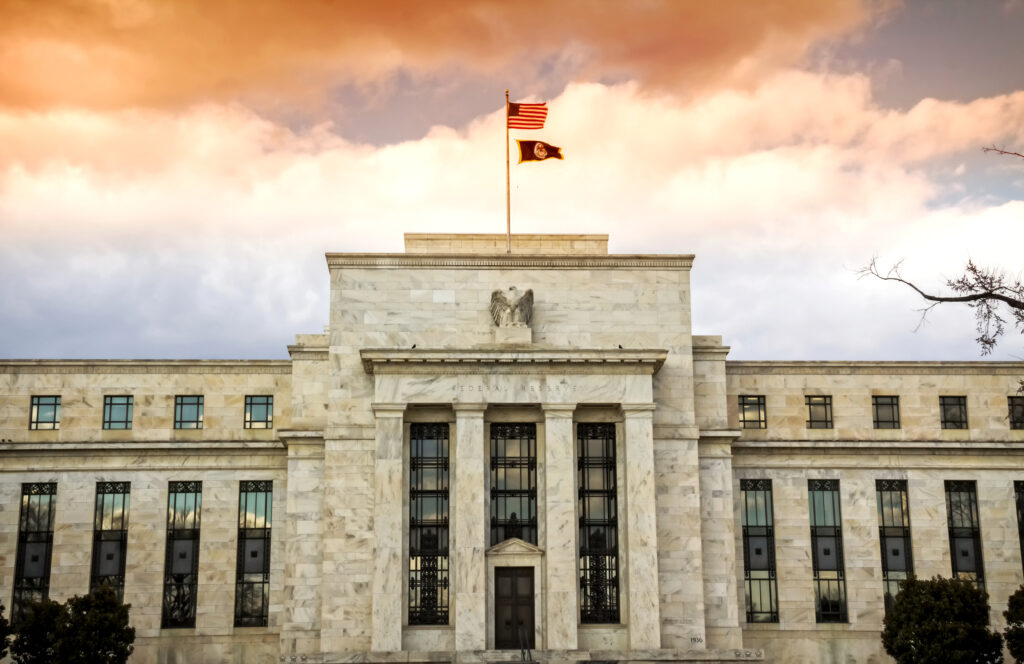Darius sat down with Julia La Roche last week to discuss the recent transition to REFLATION, inflation, rate cuts, and more.
If you missed the interview, here are three takeaways from the conversation that have significant implications for your portfolio:
1. REFLATION Is Now The Top-Down Market Regime
Last week, we experienced a Market Regime shift from the perspective of our 42 Macro Global Macro Risk Matrix from GOLDILOCKS to REFLATION.
REFLATION introduces a distinct set of Market Regime guidelines that investors should consider for their portfolio construction:
- Risk Assets > Defensive Assets
- High Beta > Low Beta
- Growth > Value
- Cyclicals > Defensives
- Small & Mid Caps > Large Caps
- International > US
- EM > DM
- Spread Products > Treasuries
- Short Rates > Belly > Long Rates
- High Yield > Investment Grade
- Industrial Commodities > Energy Commodities > Agricultural Commodities
- FX > USD
Given that both GOLDILOCKS and REFLATION are both risk-on regimes, investors may not need to make significant adjustments to their portfolios for this particular regime transition.The big pivot investors must make in a GOLDILOCKS-to-REFLATION phase transition is being incrementally longer of Risk Assets relative to Defensive Assets.
2. “Sticky Inflation” Is Likely To Be A Consensus Theme By The End of The REFLATION Market Regime
The January CPI Report revealed signs of sticky inflation:
- Headline CPI accelerated to 2.8% on a 3-month annualized basis, a value above its 2015 to 2024 trend
- Core CPI spiked to 3.9% on a 3-month annualized basis, a value above its 2015 to 2024 trend
- Supercore CPI accelerated to 6.5% on a 3-month annualized basis, a value above its 2015 to 2024 trend
Given the apparent lack of restrictiveness of the current policy in place by the Fed and the resilience of the labor market, a return to 2% inflation seems unlikely at this current juncture.
Moreover, a divergence between CPI and PCE Deflator statistics has emerged in recent months. We believe this divergence is likely to persist for another one to two quarters, allowing the “immaculate disinflation” theme to continue and asset markets to rally during this period.
3. Money Markets Are Pricing In A More Aggressive Rate Cutting Cycle Compared to The Fed’s Dot Plot Projections
The conventional wisdom among average investors is that rate cuts are only observed when the Federal Reserve begins to lower the policy rate. However, the reality is more nuanced – asset markets, not just in the US but across major economies, are deeply influenced by broader financial conditions rather than solely relying on the observed level of the policy rate.
At 42 Macro, we review policy rates set by the Fed, ECB, Bank of England, and Bank of Japan, as well as the overnight index swap rates relative to the policy rate, which reflects market expectations regarding rate hikes or cuts over the next 3, 6, 9, and 12 months. For the past six months, we have consistently observed negative spreads across OIS curves for the Fed, ECB, and Bank of England.
From our standpoint, this suggests that the rate cuts have effectively already occurred. Looking ahead to the next quarter or two, we anticipate observing incremental evidence of eased financial conditions.
That’s a wrap!
If you found this blog post helpful:
1. Go to www.42macro.com to unlock actionable, hedge-fund-caliber investment insights.
2. RT this thread and follow @DariusDale42 and @42Macro.
3. Have a great day!


